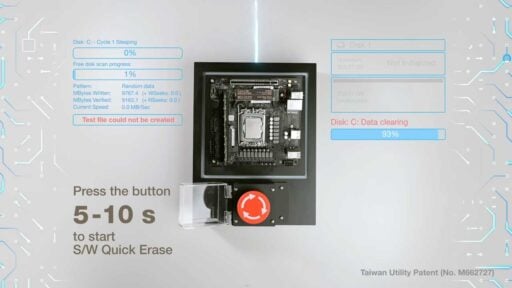Nvidia at GDC 2019 announces that GTX graphics starting from the Pascal family of GPU will support DXR this coming April of 2019 via a driver update. This is in line with the recent showcases and announcements from various game developers showing the DXR capabilities of non-RTX based graphics.
DXR has been here all along
DXR has been announced by Microsoft back in March of 2018, adding it to the DirectX 12 API. Technically, graphics cards that natively supports DirectX 12 should also support DXR.
Developers can use currently in-market hardware to get started on DirectX Raytracing. There is also a fallback layer which will allow developers to start experimenting with DirectX Raytracing that does not require any specific hardware support.
What’s surprising is how gamers interpreted Nvidia’s move to enable such support to older generation graphics. “If it is compatible with the GTX series in the first place, then why lock it with RTX?” That’s what at the very least, what I kept hearing as soon as Nvidia announced it. The complains just doesn’t make any sense.
GTX is supported but not really ideal
The real issue here is that DXR is fundamentally a compute-like workload. It is graphically intensive, requiring a lot of attention from your usual FP32 core supporting GPU such as the GTX 1080 Ti. Thus, to make sure DXR mode is completely viable, Nvidia developed Turing, more specifically the RT and Tensor cores to deal with it. Pascal alone will choke, as seen from Nvidia’s test results with Metro: Exodus at 18 FPS with DXR mode turned on. Even the arrival of INT32 pipeline support for the RTX graphics ensured better performance alone.
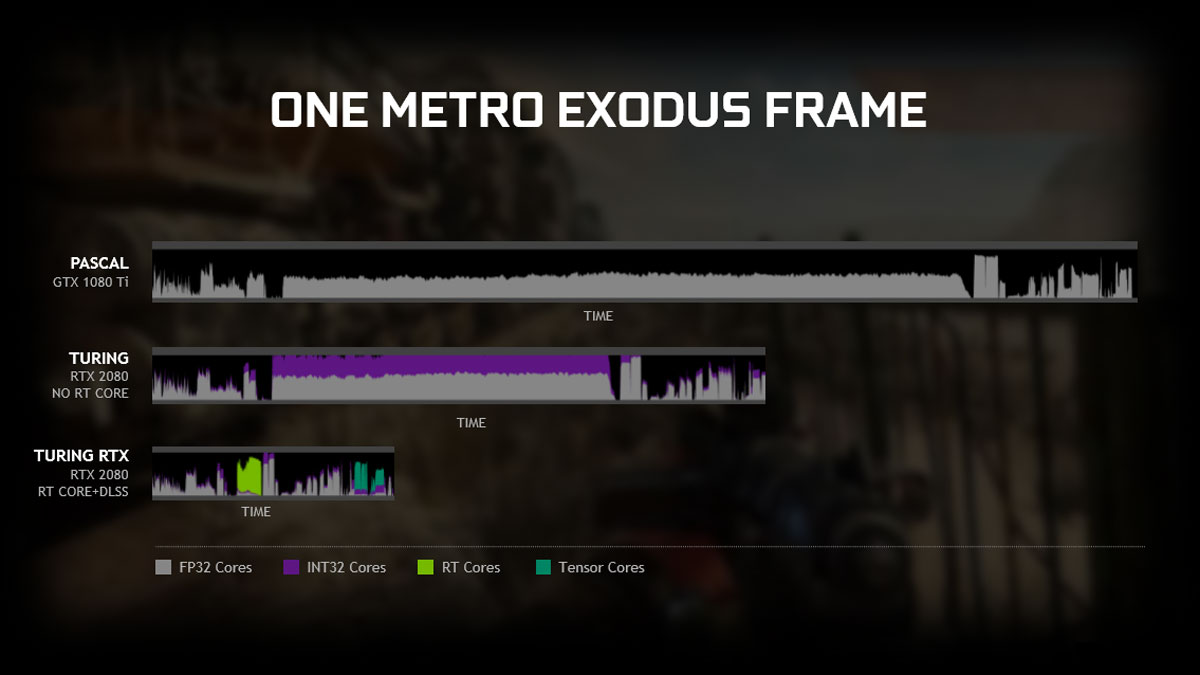
Compared side by side with DXR mode turned on (RT+DLSS), the RTX 2080 should be equivalent to a theoretical Pascal card with 44 TFLOPs of performance. That’s like four GTX 1080 Ti graphics performance in a 215W package. This is why I really don’t get why some gamers are upset with Nvidia, especially with tons of demos and benchmarks to support the reasoning behind the decision.
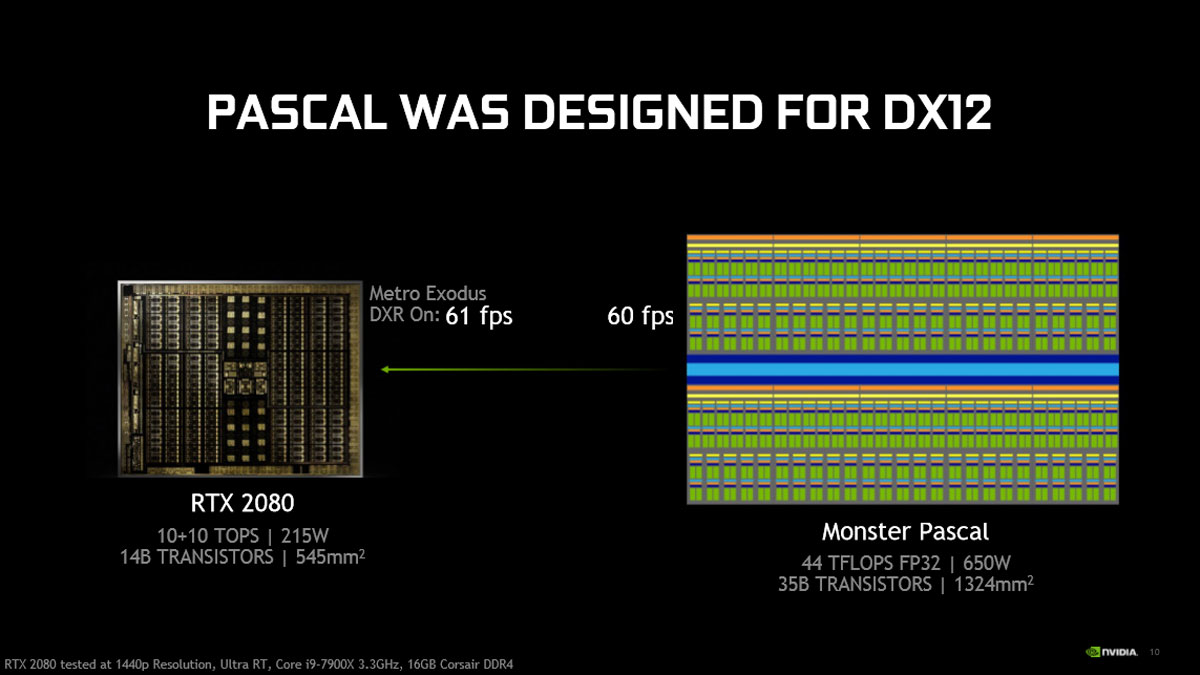
There are couple of reasons why Nvidia decided to enable DXR in the first place but one thing is for sure. Nvidia want to show gamers that RTX is absolutely required for the best possible DXR performance. The GTX graphics will also get basic RT support and a lower ray count compared to a more complex RT support provided by the RTX based graphics.
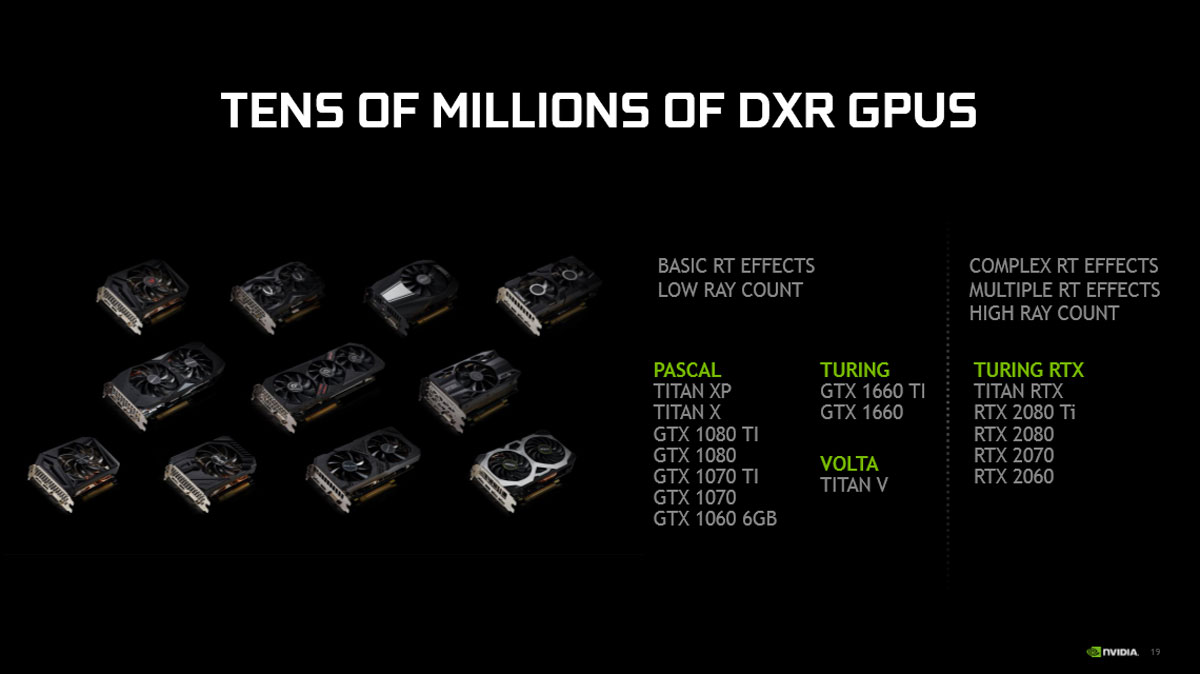
What actually piqued my interested here is the possible DXR performance differences between FP32 cards to FP32+INT32 capable cards such as the GTX 1660. It is just awful to ray trace real time with the last-gen technology but how about we get some extra math pipeline to help? Anyway, below are the full list of cards supported: (MaxQ based GTX graphics will also receive support)
Pascal:
- TITAN XP
- TITAN X
- GTX 1080 TI
- GTX 1080
- GTX 1070 TI
- GTX 1070
- GTX 1060 6GB
Turing:
- GTX 1660 TI
- GTX 1660
Turing RTX:
- TITAN RTX
- RTX 2080 Ti
- RTX 2080
- RTX 2070
- RTX 2060
According to Nvidia, GTX DXR mode will be initially supported by Unity and Unreal engine based titles then others will follow suit.
DXR is the future
DXR is the biggest leap in gaming innovation in years, with real time ray tracing no doubt – along side DX11’s introduction to tessellated graphics. Back then, tessellation is the bomb together with PhysX.
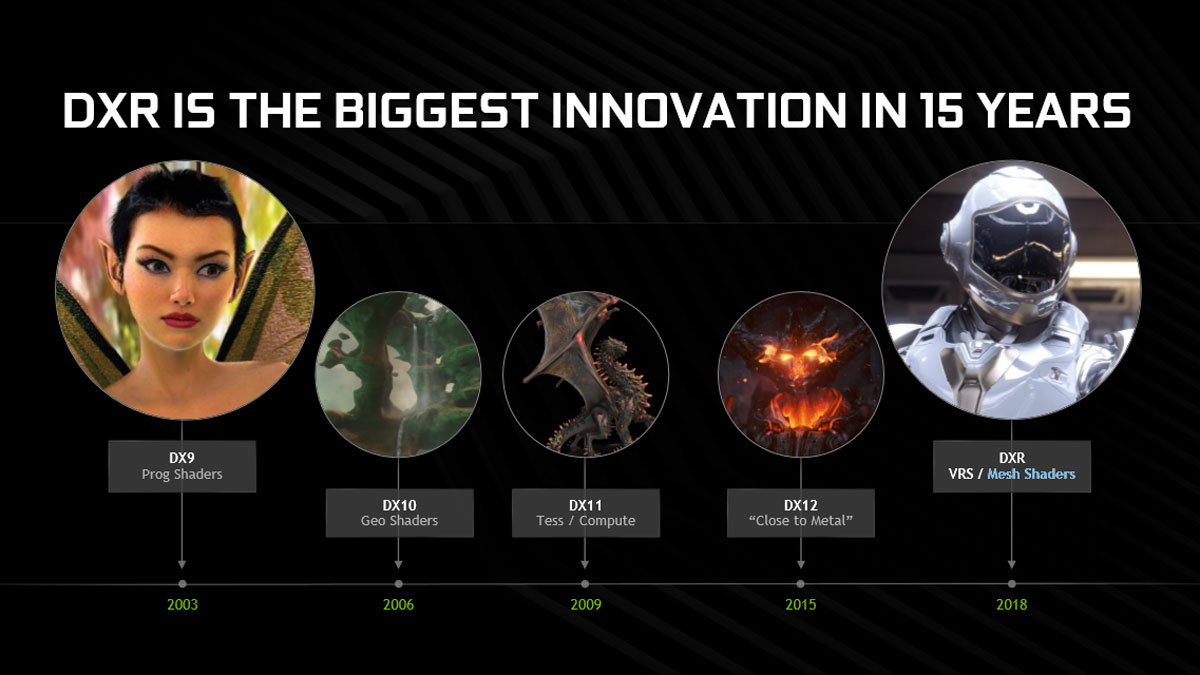
This is where next-gen gaming is bound to be and support for games has been growing steadily ever since. Like it or not, DXR is the future.


